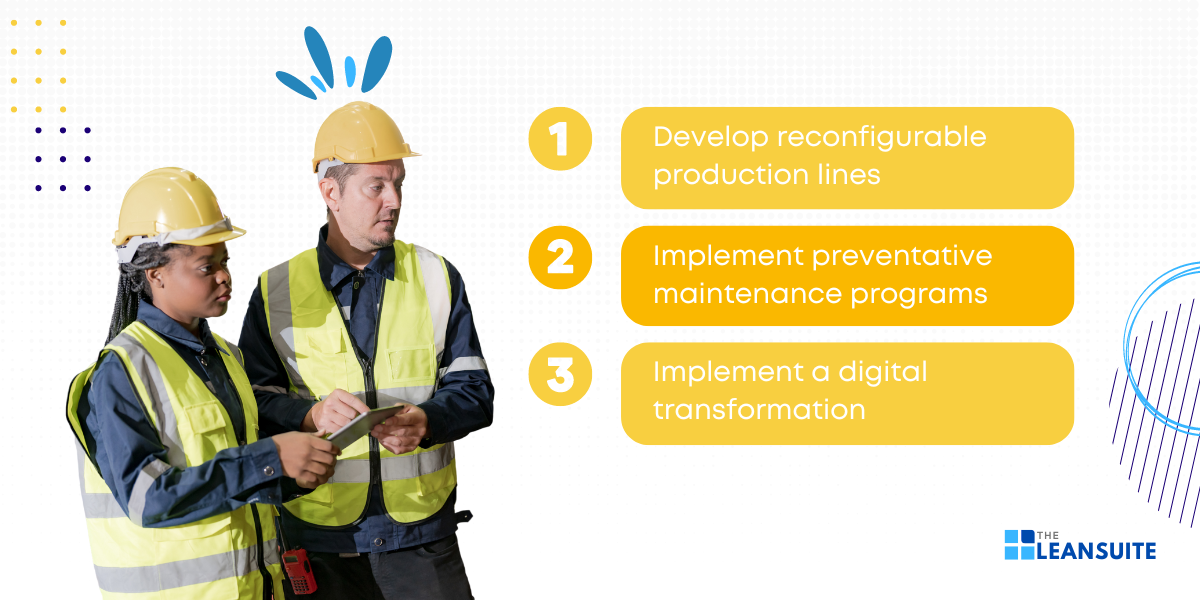Digital manufacturing is revolutionizing the way products are designed, produced, and delivered. This transformative approach integrates cutting-edge digital manufacturing technologies and processes to create more efficient, flexible, and sustainable manufacturing systems.
By harnessing the power of digital technologies, you can streamline production, reduce waste, improve manufacturing operations, and bring innovative products to market faster than ever before. In this blog post, we will explore what digital manufacturing is, highlight its benefits, and offer successful implementation strategies.
What is digital manufacturing?
Digital manufacturing is a transformative approach that leverages advanced computer systems and technologies to support and improve the efficiency, flexibility, and innovation of manufacturing processes.
By integrating computer-aided design (CAD), computer-aided manufacturing (CAM), and other digital tools, this approach enables seamless communication and coordination across different stages of production. What’s more, it encompasses techniques such as 3D printing, CNC machining, and robotics. This allows for precise and rapid prototyping, customization, and mass production.
Digital manufacturing can be applied across various aspects of the manufacturing landscape. For example, product life cycle management, smart factory initiatives, and value chain management. By adopting digital manufacturing, the result is a more agile, responsive, and data-driven production environment that can adapt quickly to changing market demands and technological advancements.
The evolution of manufacturing processes: From traditional to digital
The evolution of manufacturing processes has undergone significant transformations, with digital manufacturing marking the fourth industrial revolution, commonly referred to as Industry 4.0. This phase leverages advanced digital technologies to enhance machinery, streamline processes, and boost overall productivity.
Through the integration of the Internet of Things (IoT), smart machines equipped with artificial intelligence (AI) and machine learning, and big data analytics, digital manufacturing enables companies to streamline production processes, reduce downtime, and enhance product quality.
By adopting these cutting-edge technologies, you can achieve higher efficiency and agility. Thereby, allowing you to compete more effectively in the increasingly competitive global marketplace.
Benefits of digital manufacturing
Digital manufacturing offers three main benefits that can significantly transform traditional production methods:

1. Increased efficiency
One of the most notable benefits of digital manufacturing is the dramatic increase in efficiency.
By leveraging technologies such as automation, AI, and machine learning, you can streamline your production processes. What’s more, automated systems can perform repetitive tasks faster and with greater precision than human workers. As a result, this reduces the potential for human error due to lost or misinterpreted data.
Furthermore, the implementation of predictive maintenance helps in anticipating equipment failures before they occur. This minimizes downtime and ensures that machines operate at optimal performance levels. Consequently, this can lead to faster production cycles and higher output rates.
2. Real-time manufacturing visibility
Digital manufacturing enables real-time visibility into the manufacturing process.
This visibility is crucial for making informed decisions quickly and effectively. That is to say, by having access to up-to-date information on every aspect of the manufacturing process, managers can identify potential issues before they become significant problems and respond to issues as they rise.
In addition, this real-time insight facilitates a faster pace of innovation, as it allows for immediate feedback and iterative improvements. The ability to see the entire production process at a glance also aids in resource allocation. This ensures that materials and labor are used as efficiently as possible.
3. Reduction in costs
Cost reduction is another significant benefit of digital manufacturing.
By optimizing processes and improving efficiency, digital technologies help to lower operational costs. Automation reduces the need for manual labor, which can lead to substantial savings in labor costs. Moreover, predictive maintenance and real-time monitoring minimize unexpected downtimes and reduce maintenance expenses.
Digital manufacturing also enables more accurate inventory management and demand forecasting, which helps in reducing waste and avoiding overproduction. Additionally, the precision of digital manufacturing techniques minimizes material waste and rework, further contributing to cost savings.
Digital manufacturing systems
Digital manufacturing systems leverage computer-based tools and technology to revolutionize manufacturing operations, enhancing efficiency and precision. These systems enable you to connect and integrate various aspects of production into a cohesive, streamlined manufacturing process.
Key components of digital manufacturing systems include:
- Digital manufacturing tools, such as CAD (Computer-Aided Design) software, which allows for precise design and modelling
- Digital manufacturing technology, which encompasses advanced machinery and robotics driven by digital controls
- Computer integrated manufacturing (CIM), which integrates all facets of the manufacturing process through computerized systems
These elements collectively facilitate real-time monitoring, data analysis, and automation. As a result, this improves product quality, reduces waste, and creates faster production cycles.
In short, the applications of digital manufacturing systems are vast, spanning industries from automotive to aerospace, where they drive innovation and competitiveness by enabling more agile and responsive manufacturing practices.
Implementing digital manufacturing: Strategies for success
Successful implementation of digital manufacturing depends on a multi-faceted strategy that addresses several critical factors.

Develop reconfigurable production lines
You must consider the integration of reconfigurable production lines. Doing so will allow for flexibility and adaptability in response to changing market demands and product variations. This adaptability can significantly reduce downtime and increase efficiency.
Implement preventative maintenance programs
Implementing robust preventative maintenance programs is essential. These programs utilize predictive analytics and IoT sensors to monitor equipment health and preemptively address potential issues before they lead to costly breakdowns.
Implement a digital transformation
Beyond these technical adjustments, digital manufacturing requires a comprehensive digital transformation of the entire manufacturing process, encompassing everything from supply chain management to final product delivery. This transformation includes leveraging advanced technologies such as AI, machine learning, and big data analytics to optimize operations, improve quality control, and enhance decision-making capabilities.
The future of digital manufacturing
The future of digital manufacturing shows promising growth as automation and the use of information in production processes become increasingly sophisticated. With the emergence and expansion of Industry 4.0, the integration of cyber-physical systems, the Internet of Things (IoT), and advanced data analytics will enhance efficiency and competitiveness in the manufacturing industry. This interconnected landscape will enable different systems to seamlessly communicate and collaborate. Thus, creating a more streamlined and responsive production environment. As a result, you will be able to optimize your operations, reduce downtime, and respond rapidly to market demands, driving innovation and improving overall process efficiency.





